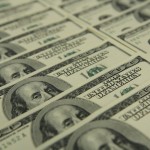The sterling retreated against the US dollar on Wednesday for a second day in a row ahead of Bank of England Governor Mark Carneys statement on forward guidance, regarding interest rates in the United Kingdom.
GBP/USD hit a session low at 1.5286 at 9:16 GMT, after which consolidation followed at 1.5296. The pair was to find support at August 5th low, 1.5257, while resistance was to be met at August 6th high, 1.5377.
Bank of England Governor Mark Carney was expected to provide guidance on interest rates at his press conference, following the release of the report on inflation. “Realistically he’ll probably reiterate that interest rates will be held low until growth picks up and inflation stabilizes around the 2 percent target,” said Harry Adams, head of trading at Argentex LLP, currency-advisory company in London, cited by Bloomberg. “The more he says, the more he leaves himself open and the more the pound will move. He could take the Fed approach by linking policy to unemployment rate. This would at least give investors some sort of barometer.”
Carney has already made a move to curb higher borrowing costs. UK central bank said in a statement, following its meeting on July 4th, that the “implied rise in the expected future path of bank rate was not warranted” by economic developments, Bloomberg reported.
The central bank was also expected to revise up its UK growth forecast, especially after the strong reports on activity in the sectors of manufacturing and services in the United Kingdom.
Meanwhile, the greenback was under pressure, as recent economic data from the United States fueled the uncertainty over the future of Federal Reserve’s monthly asset purchases. Chicago Federal Reserve Bank Chairman Charles Evans said that he would not rule out the withdrawal of central bank’s stimulus measures at the bank’s meeting in September.
Elsewhere, the pound was trading steadily against the euro, as EUR/GBP cross inched up 0.06% to 0.8675. Ultimately, sterling has declined by 1.7% during this year, according to Bloomberg Correlation-Weighted Indexes, tracking 10 developed-nation currencies. The euro has advanced 5.9%, while the US dollar has gained 5%.





